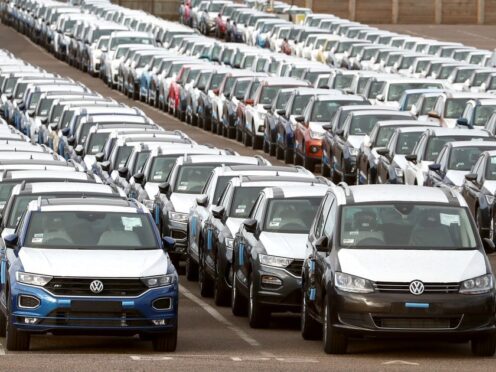Purchases of new cars by private buyers have declined for nine consecutive months, new figures show.
The Society of Motor Manufacturers and Traders (SMMT) said 67,625 new cars were registered by private consumers in June, down 15.3% from 79,798 during the same month last year.
The overall new car market grew by 1.1% year-on-year, mainly due to a 14.2% increase in purchases for fleets owned or leased by businesses or other organisations.
This means more than one million new cars were registered in the first half of the year for the first time since 2019.
The overall new car market between January and June was up by 6.0% compared with the same period last year.
The market share of pure battery electric new cars so far this year is 16.6%, up from 16.1% in the first half of 2023.
SMMT chief executive Mike Hawes said: “The year’s midpoint sees the new car market in its best state since 2021 – but this belies the bigger challenge ahead.
“The private consumer market continues to shrink against a difficult economic backdrop, but with the right policies in place, the next government can re-energise the market and deliver a faster, fairer zero emission transition.
“All parties are agreed on the need to cut carbon and replacing older fossil fuel-based technologies with new electrified powertrains is the essential step to achieving that goal.”
Ian Plummer, commercial director at online vehicle marketplace Auto Trader, said: “With average new car prices rising almost 40% over the last five years, it’s clear cost is the culprit.
“Manufacturers are responding with discounts but they’re failing to keep pace, which is forcing many buyers to opt for a used alternative.
“Whoever forms the next government needs to address electric car affordability and provide long-term stability for the market.”
Steve Gooding, director of motoring research charity the RAC Foundation, said: “It’s hard to see how the market is going to shift up a gear in the months ahead.
“Many private buyers will probably want to see how the election results shake out and what they mean for household budgets.
“As to boosting the EV market, there seems little chance of subsidies for buyers being restored, so if prices of new battery-powered cars are going to align with those for petrol and diesel equivalents then manufacturers will have to take the financial hit rather than the taxpayer.”
